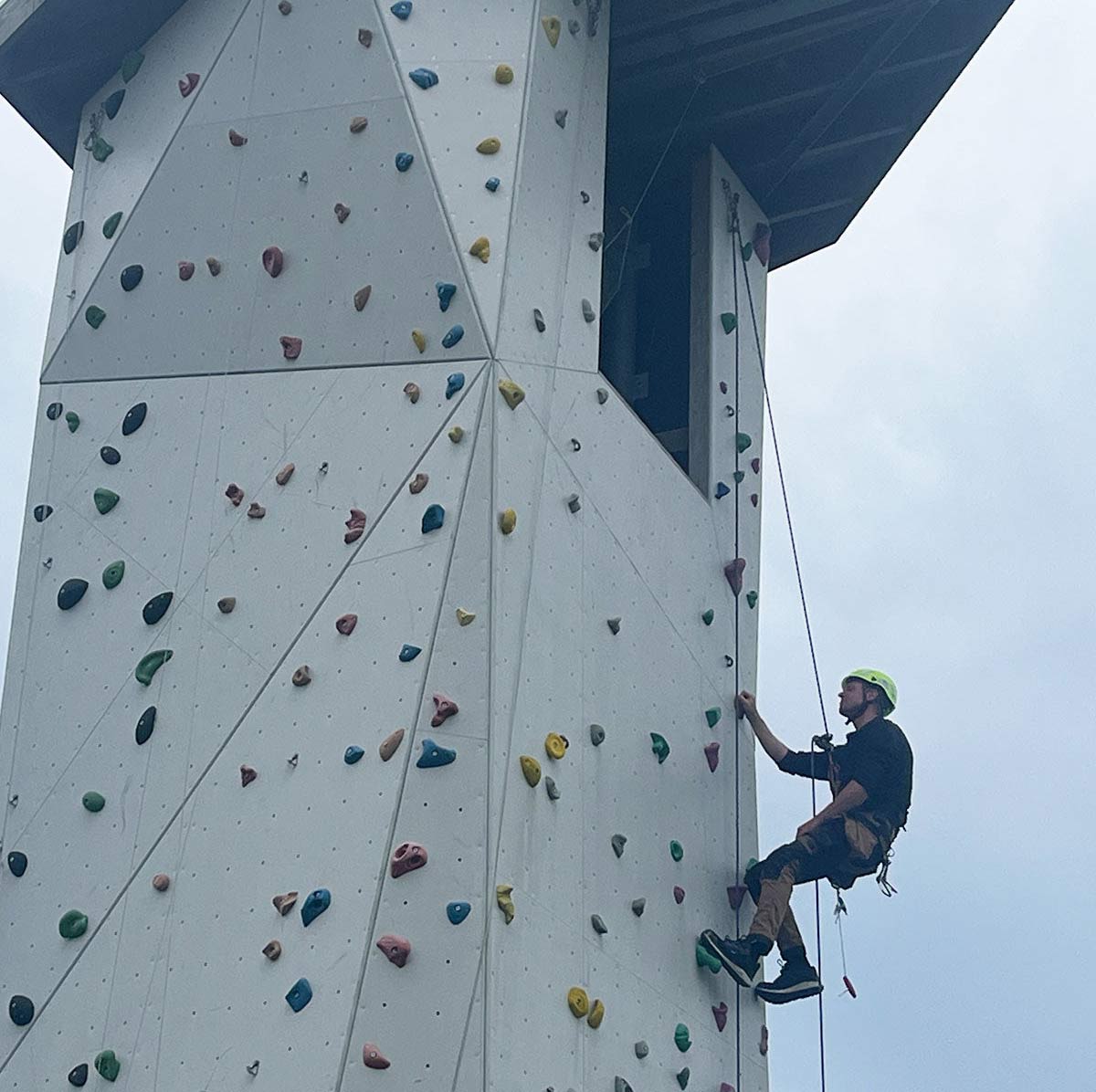3 Critical Factors for Improving Your Climbing Skills:
- Technique
- Physical Strength
- Mental Strength
These are the three key factors we focus on in climbing. Together and individually, they will help you progress up the grading scale. If you concentrate only on two of them, for example, physical and mental strength (which many tend to do), you may find it challenging to further improve your climbing skills.
In this post, Kenneth Jensen will explore these three factors and provide concrete suggestions on how you can enhance your performance on the climbing wall.

1. Technique
Technique is probably the most crucial factor, especially if you only climb indoors. However, there's no easy shortcut to improving your technique – except maybe hiring a coach. Otherwise, good technique requires a lot of experience. Hence, you need to climb a lot.
Why You’re Not Improving Technically
The brain plays a critical role in climbing. Without diving into a lengthy explanation of how the brain and body function together on a neurological level, it boils down to this: you need to get the right code into your brain. The right code equals the perfect movement. If you often climb close to your physical max – where you might end up in "survival mode" – you aren't focusing on executing the perfect movement. Instead, you're focused on survival, climbing with very little or no reserve. This means you don't have the opportunity to improve your technique since you're not concentrating on the correct movement. And if you aren’t very experienced yet, the correct movement isn’t second nature – not yet. In other words, your technique isn't getting any better.
But there's help available. You can streamline your learning process and do some specific exercises. For me, at least, this significantly improved my technique in a relatively short time.

How to Improve Your Technique
Spend a month or two climbing routes that are about two grades below your best onsight level and focus 100% on your technique. Do the right thing every time, and never let your muscular strength compensate for your lack of technique. Climb a lot of "easy" routes instead of tackling the unresolved projects you’re probably working on. This way, your brain learns the right body code and the basic techniques (or whatever your level may be). If your brain can perform the fundamental techniques automatically, you’ll have the capacity to focus on other things when under pressure, such as the next clip or the four tough moves leading up to the next small rest.
And for heaven’s sake, don’t forget your feet!

Tips for Better Foot Technique
- Place your toe directly on the small granite "outcrop" (without lifting your toe off to check if it’s properly positioned).
- Activate your foot (i.e., lift your heel slightly and press through your toe exactly at the moment you place your toe on the hold).
- Maintain pressure.
- Trust it and keep going!
- A committed foot never slips! That’s just how it is.
You can practice your foot technique on the bouldering wall or on a top rope. This will give you the necessary confidence. But if you try this technique on a rock, which is physically smaller than what you find in a climbing gym, you’ll never have trouble with even the smallest "outcrops" in the climbing gym.
2. Mental Strength
The final focal point is mental strength. This is a huge factor, especially when climbing outdoors with your own gear. Indoors, it is also a factor but less so than in outdoor climbing. We’ve covered the importance of trusting your feet, so next is training for falls.
Practice Controlled Falls
Start with a route that is one to two grades below your maximum. Make a rule that at no point can you clip above your head – even if you can easily do so. Get used to climbing a bit higher above the protection than you normally would. When you're ready, make it a habit to skip a clip on the route where it fits best. For example, the clip just before the anchor is usually a good place to do this safely and responsibly without compromising safety. Always make sure your partner knows you will do this so they are prepared for a potentially longer fall. Over time, challenge yourself to take a lot of long falls, so you eventually become so accustomed to it that you’re completely indifferent to falling.
Challenge Yourself

Another challenge I often give myself is as follows: I choose a route that is around or just above my max and tell my partner that I will climb this route to the top or fall trying. Once I’ve said it, I have to do it… Alternatively, you can promise them a beer or a cup of coffee if you don’t keep your word. This is really good motivation because it affects both your pride and your wallet if you give up halfway.
3. Physical Strength

While focusing on your technique can take you a long way, it’s important to be physically strong. This is especially true for overhanging sections, where you’ll find you simply need some power in your arms. If you have ambitions for "multi-pitch" routes, endurance can also become a challenge. However, the most important aspect of physical training is actually injury prevention! It’s just not worth it to get hurt. Below, I’ll provide some suggestions on how you can improve your physical strength and reduce the risk of injury.
Remember to Warm Up
It’s highly beneficial to start with a warm-up. This might be the most important factor for a healthy and stable climbing machine that has many future climbing kilometers in it. So, if you have ambitions to climb for many years, warming up is truly invaluable. However, if you plan to hang up your climbing shoes before you turn thirty, you can skip the next section.
Your Core is Important
The foundation is your core muscles. When you strengthen your core with many asymmetrical exercises like balance training, you also enhance your brain's ability to send signals to the muscles. This is important because you can become stronger in other parts of your body when you train your brain's ability to send information to the muscles. For example, if you’ve ever done strength training somewhat systematically, you likely made quick progress within the first month. Unfortunately, it wasn’t due to your muscles. It was your brain’s ability to send signals to the muscles through the nerve pathways in a more efficient and precise way. So yes, if you train your core/spine, where many nerve pathways are located, you’ll also train your brain and thus achieve a healthy body with less likelihood of injury.
Personally, I do various types of core exercises several times a week. Sometimes, I even use them as a thorough 20-minute warm-up before I start climbing. So yes, get going with a lot of core exercises.
Exercises to Improve Your Physical Strength
Bouldering and Hangboard Training are directly related to climbing. You can train hard boulder movements on a slightly overhanging wall, thereby increasing your strength and power. You can also use a hangboard. For instance, I've been very pleased with my hangboard at home in my apartment. It offers a more systematic approach to finger training. This also means I can do climbing-related training without having to be in a climbing gym. It’s super practical in a busy daily schedule where it might be hard to find time to get to the gym as often as you’d like. The same goes for pull-ups. You can do climbing-related pull-ups either on a Beastmaker or a pair of grip- and forearm-related handles. I’ve experienced better results by isolating pull-ups instead of doing them after climbing training. So yes, even if you might not have time to visit the climbing gym every day, you can definitely do climbing-related training at home.



